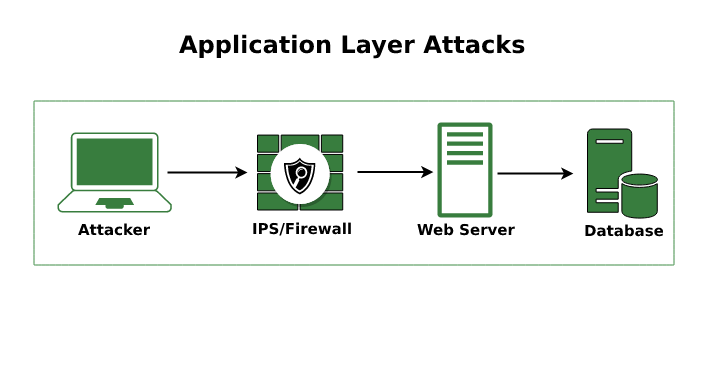Application layer attacks are attempts to gain unauthorized access to an organization’s servers through software vulnerabilities. These attacks vary in severity, complexity, and technique, depending on the type of application you use. These attacks can be numerous and diverse, so there is no single entry point for hackers to exploit. Therefore, the number of attacks on the application layer is as high as the number of vulnerabilities in your organization’s network infrastructure. Application layer attacks can result from web-based scripts that trick users into clicking, or malicious documents sent by email or infected via a USB flash drive. There are thousands of ways to find and exploit vulnerabilities to access insecure networks.
Types of Application Layer Attacks:
Attackers develop new attack types and vectors that will be used to launch a new rise of attacks. When the defender is good at blocking these new attacks, the attacker develops a new type of attack and repeats this cycle. The growth of insecure IoT devices in recent years has benefited DDoS attackers, as the number of smart devices that can be used for more advanced application layer attacks is nearly unlimited.
Some common types of application layer attacks are as follows:
- BGP hijacking
- Slowloris
- Show post
- Slow read
- HTTP(/s) flooding
- Low and slow attack
- Large payload post
- Mimicked user browsing

Methods of detection:
- Firewalls: Firewalls identify packets from outside sources that have the desired ports closed or are associated with a known attack. This method has proven somewhat useful in preventing users from accessing certain applications, but there is still plenty left open for hackers to slip through.
- Wireshark: This tool can be used to capture and analyze packets. Please read about Wireshark here.
Key points:
- The application layer attacks are more dangerous because the victim couldn’t be bothered to log in.
- In some cases, once you log in no trace will remain of an attack and all the passwords could be logged by an attacker, leaving your cookies for an attacker.
- Also, many applications (email web browser, etc.) allow no security even if you hover over buttons and links checking for such things as JavaScript, cookies and saved websites, etc.
Countermeasures:
- The easiest method is prevention. This is possible through a combination of firewalls, and intrusion detection systems.
- The most important point of this security setup is that no one should be able to get into a company without permission.
- Once this has been taken care of, the next step is an intrusion detection system (IDS).
- These systems are designed to detect malicious or abnormal activity on the network from external or internal sources.
- They can be used to detect application layer attacks, but the problem lies in the ability of certain types of IDS to detect multiple attacks at once. Many of them also have filters that are set to prevent false positives.
- In other words, they will allow certain actions to pass that may be unusual in the eyes of a human being, but aren’t necessarily malicious. This is what makes detecting application layer attacks difficult for many companies.
- The only sure way to test for these attacks is in a lab setting.
- Several tests can be performed on applications to test for security flaws, but none can test for everything at once. It is up to the user (or IT professional) to know what features of an application are most important and relevant to their company’s security needs before performing tests on applications as whole or certain features.




